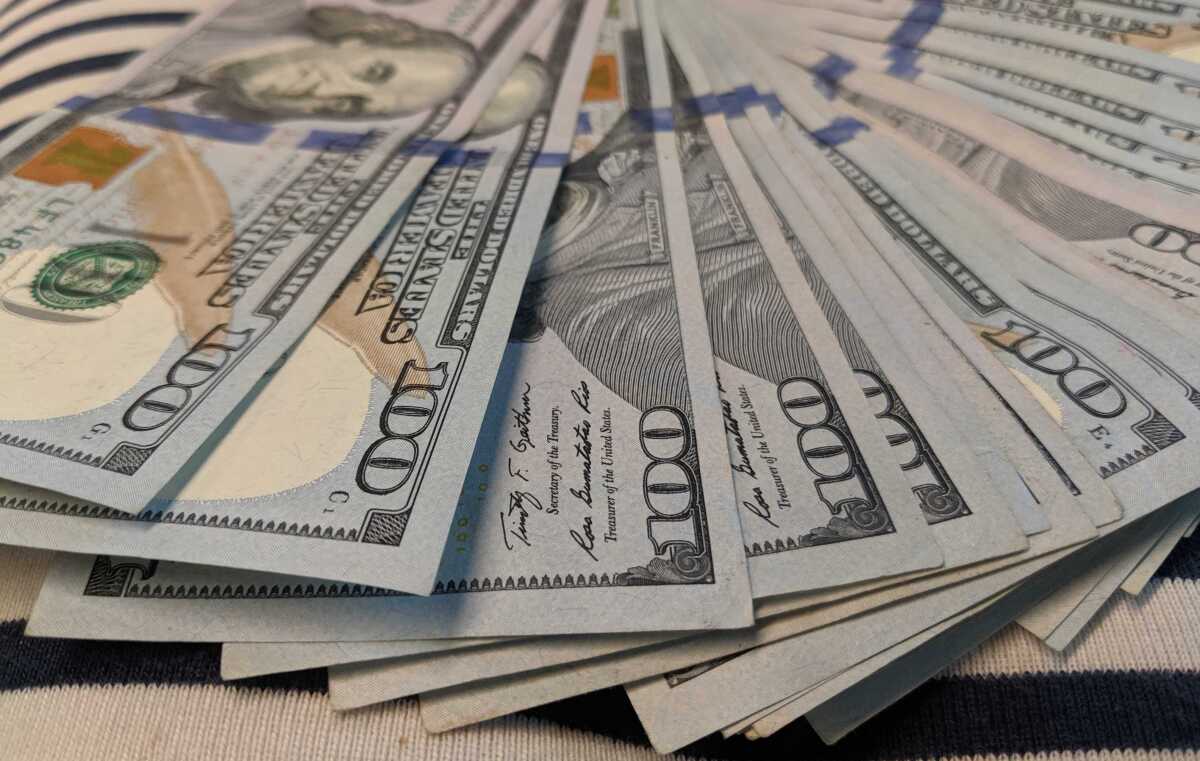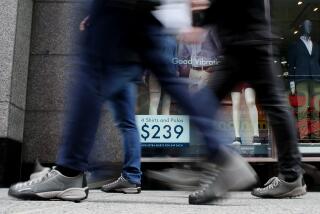Money-market funds won’t keep you safe from negative yields

- Share via
Cash is just a flash in the pan.
The inherent appeal of U.S. money-market funds is undeniable. For one, they’re a stable alternative when the United States’ trade war with China is whipsawing equity markets. Plus, they still pay more than 2% interest in a world in which $14.5 trillion of debt yields less than zero, including 30-year German securities and even some junk-rated corporate bonds. Last week, Barron’s published an article titled “The Case for Going into Cash Now,” which made both of those points.
The first one holds up. If an investor believes that the Trump administration’s trade disputes will continue to roil risk assets, then it makes perfect sense to park money in cash, collect a modest return and wait out the storm before returning to the market at a cheaper price. Granted, the Standard & Poor’s 500 index has looked as if it peaked before, only to reach new highs, so it’s anyone’s guess whether this latest escalation will be what topples the decade-long bull run in stocks.
However, considering cash as a haven from the growing pile of low- or negative-yielding debt simply doesn’t pass muster. The difference between now and, say, a year ago is that the Federal Reserve is no longer gradually raising interest rates. Quite the contrary: Bond traders are now expecting the fed funds rate to fall almost 50 basis points by the end of October. They see the central bank’s lending benchmark tumbling to about 1% come early 2021.
This rapid easing will take its toll on money-market funds — the yield advantage they enjoy now will evaporate quickly. As I wrote in June, cash investors were already coming to grips with the idea that the industry was at its peak. The Fed’s well-telegraphed interest-rate cut last week, its first in more than a decade, might have been the tipping point. Total net assets in money-market funds fell in the week that ended July 31, the first outflow since April, according to Investment Company Institute data. At about $3.3 trillion, the amount of cash in money markets is still near the highest since early 2010.
It’s true that cash has far less duration risk than longer-term bonds, which could hand fixed-income investors steep losses if inflation or economic growth rebound suddenly. The Barron’s article notes that if the iShares 20+ Year Treasury Bond exchange-traded fund, known by its ticker TLT, simply reverted to where it was three months ago, it would mean a 7% loss for investors. The benchmark 10-year yield was around 2.5% then.
I’ll never say never, but it’s hard to see a path back to those levels anytime in the near future. Rather than fret about a quick 75-basis-point climb in 10-year yields, the more pressing question for investors should be when (if ever) they expect to see interest rates this high again.
In Europe, for instance, it seems investors have all but given up hope of a return to normalcy, which explains the incessant bid for ultra-long debt that still offers a positive rate of return. In effect, 30-year French bonds that yield 0.6% is a way of expressing that short-term rates in the region are unlikely to climb much above zero in the coming decades. And here’s a staggering data point from Bloomberg News’ Sebastian Boyd: The average yield on an investment-grade bond in euros is a measly 4 basis points, the lowest ever.
U.S. investors need to ask themselves those same uncomfortable questions. Yes, it’s hard to get excited about the 10-year yield at 1.73% when it was above 2% just a week ago. But some market observers are starting to talk about that benchmark not just falling below its all-time low of 1.32%, but dropping all the way to zero. If anything close to that scenario happens, people will be kicking themselves for not locking in current yields for the next decade, just as they probably regret not loading up on 10-year Treasuries when the yield was 3.25% in October.
That’s a somewhat grim future to contemplate, which probably makes money markets appear to be a more alluring solution. But it’s crucial to remember those funds are fraught with reinvestment risk. Unlike longer-duration bonds, which lock in a set interest rate for years and years, cash rates can disappear quickly, especially when just about every central bank around the world is preparing to ease monetary policy.
Cash may be king now, but its reign is nearly over.
More to Read
Inside the business of entertainment
The Wide Shot brings you news, analysis and insights on everything from streaming wars to production — and what it all means for the future.
You may occasionally receive promotional content from the Los Angeles Times.










